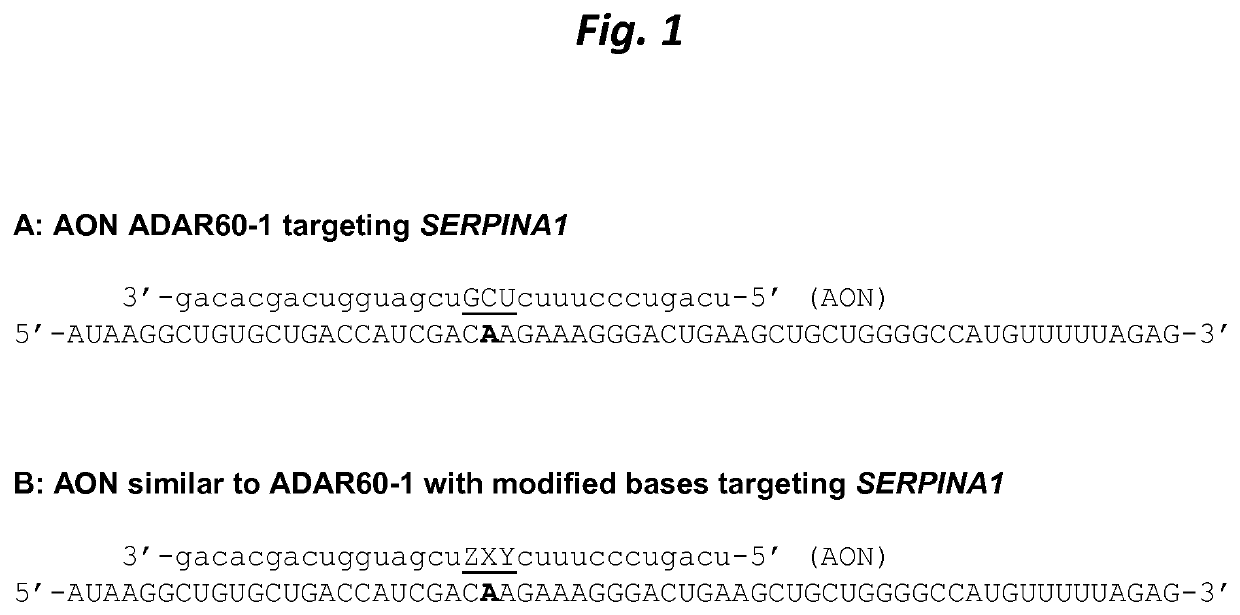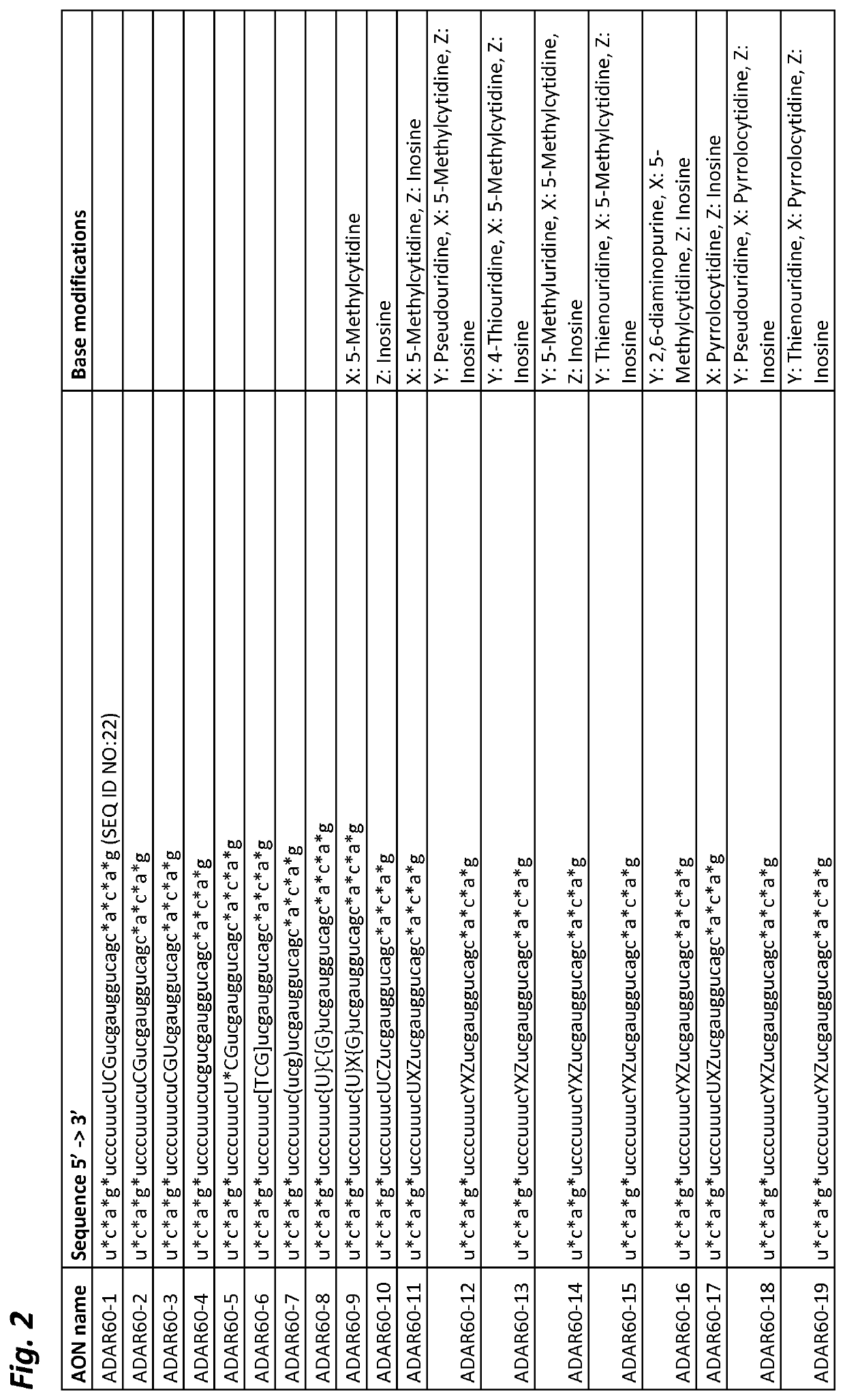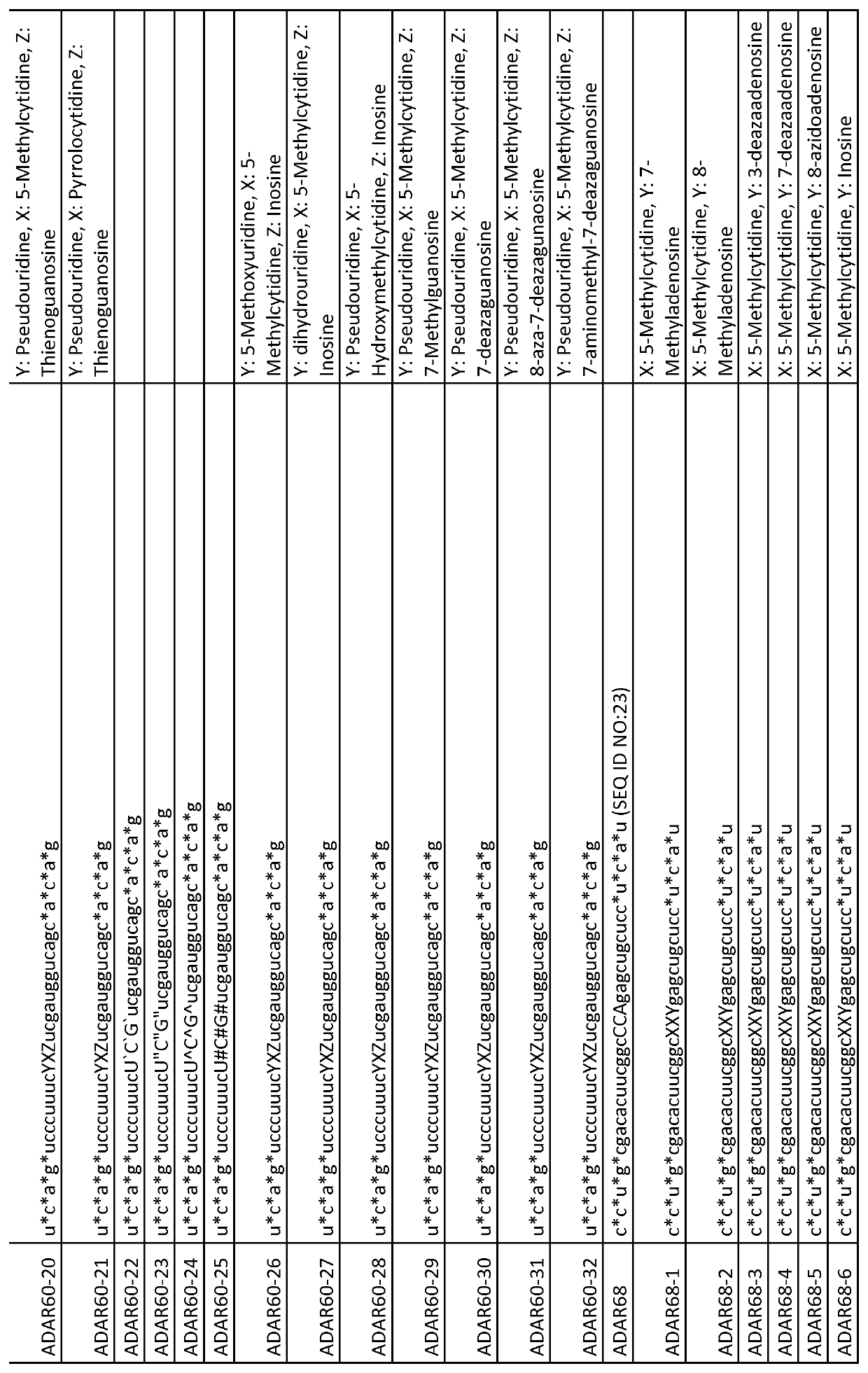Chemically modified single-stranded RNA-editing oligonucleotides
a single-stranded oligonucleotide, rna editing technology, applied in the field of medicine, can solve the problems of not being readily adaptable to human use, system suffers from similar drawbacks, and cannot achieve deamination of a specific target adenosine in the target rna sequen
- Summary
- Abstract
- Description
- Claims
- Application Information
AI Technical Summary
Benefits of technology
Problems solved by technology
Method used
Image
Examples
example 1
Modifications in AONs Targeting Human SERPINA1 RNA to Increase Stability
[0114]Unpublished patent application PCT / EP2017 / 065467 describes a method for targeted A-to-I editing by the use of antisense oligonucleotides (AONs). Whereas most of the nucleotides in these AONs are 2′-O-methylated RNA and have phosphorothioate linkages, they contain a few, usually 3, unmodified RNA nucleotides (the ‘Central Triplet’) in the portion of the AON with the middle nucleotide directly opposed to the target adenosine and its 2 neighbouring nucleotides. This is because it had previously been shown that A-to-I editing is strongly inhibited when the nucleotides of the Central Triplet are 2′-O-methylated (Vogel et al. 2014). However, AONs containing unmodified RNA nucleotides are inherently biologically unstable due to nucleases that can hydrolyze the residues in these positions. This may be a disadvantage for efficient use of the AONs as e.g. therapeutic agents, as they may be degraded prior to reaching...
example 2
thioate Linkages in AONs Targeting Mouse Idua RNA to Increase Stability
[0123]In the previous example it was shown that inclusion of one phosphorothioate linkage after the first position within the Central Triplet did not increase stability appreciably (FIG. 3A; ADAR60-5). To investigate this in more depth, it was tested whether inclusion of more phosphorothioate linkages within the Central Triplet region could nevertheless have an influence and increase stability.
[0124]For this, the inventors of the present invention selected Hurler syndrome as the model system, also known as mucopolysaccharidosis type I-Hurler (MPS I-H), which in humans is caused by the c.1205G>A (W402X) mutation of the IDUA gene. The target sequence in the mutated human gene would be 5′-UAG-3′ (with the target A in the middle, see FIG. 4A), and the Central Triplet of the AON would then be 5′-CCA-3′ (including the central, mismatched C; see FIG. 4B for the 5′-XXY-3′ notation) or 5′-CUA-3′. A mouse model for this mu...
example 3
ng Activity of AONs With Combined Chemical Base Modifications in the Central Triplet
[0128]Nucleotide phosphodiester, sugar and base modifications are used to increase the stability of oligonucleotides against nucleases. Importantly, it was envisioned by the inventors of the present invention that such chemical nucleotide modifications may also be used for other purposes such as increased binding of AONs to their target RNA, to get better recognition and / or to increase the enzymatic activity of proteins acting on double-stranded complexes of AONs with their specific target RNA sequences.
[0129]The inventors first wanted to know whether a combination of nucleotide base chemical modifications in the Central Triplet of an AON could enhance the editing activity of ADAR2. For this, ADAR60-1 and ADAR60-15 (see FIGS. 2 and 3) were used to investigate such influence on enhancing editing activity of ADAR2 enzyme on a human mutated SERPINA1 target RNA molecule. These two AONs share the same seq...
PUM
| Property | Measurement | Unit |
|---|---|---|
| concentrations | aaaaa | aaaaa |
| concentrations | aaaaa | aaaaa |
| concentrations | aaaaa | aaaaa |
Abstract
Description
Claims
Application Information
 Login to View More
Login to View More - R&D
- Intellectual Property
- Life Sciences
- Materials
- Tech Scout
- Unparalleled Data Quality
- Higher Quality Content
- 60% Fewer Hallucinations
Browse by: Latest US Patents, China's latest patents, Technical Efficacy Thesaurus, Application Domain, Technology Topic, Popular Technical Reports.
© 2025 PatSnap. All rights reserved.Legal|Privacy policy|Modern Slavery Act Transparency Statement|Sitemap|About US| Contact US: help@patsnap.com



